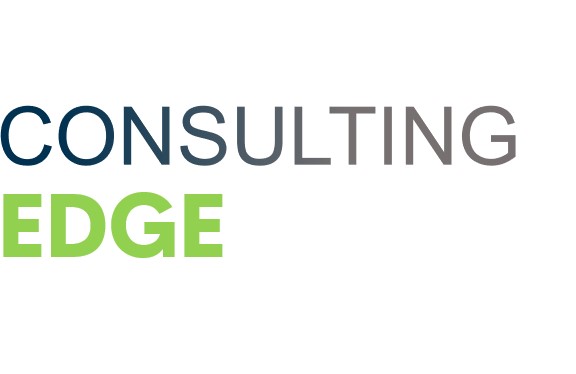Do you know what is going on in your business? Do you have a good understanding of the state of things and how it’s impacting your company? If not, then this blog post is all about knowledge audit.
Knowledge audit has many benefits to offer you in terms of your organization or project management processes. This type of information gathering helps companies keep track of their employees’ knowledge base. So that they don’t lose skilled workers when someone leaves the company unexpectedly.
This blog post is about what is known as a Knowledge Audit, and how it can be beneficial for organizations. It also provides insight into where there might be opportunities to improve efficiency with certain tasks and responsibilities.
What is Knowledge Audit?
A knowledge audit is a process that gathers information about the organization’s existing processes and resources. It also includes documenting what has been done in the past, how it was done, and who did it. The idea behind this type of audit is to establish where there are areas for improvement or potential opportunities within your project management structure.
When a company conducts a knowledge audit they are able to gain an understanding of the current state of their organization. They can see what has been done in the past, how well things have run so far, and where there is room for improvement going forward.
This information is then used as a foundation from which to expand upon or improve your processes moving forward. It’s also easier if you have this documented before something happens that forces change within your PM structure.
Knowledge audits often include documentation on previous projects completed by staff members who may be leaving shortly after conducting these reviews with them present during the actual review
What is the Purpose of a Knowledge Audit?
The primary purpose behind knowledge audits is to maintain and grow your organization’s project management processes. This helps companies avoid losing valuable employees when someone leaves unexpectedly, which could have a negative impact on productivity levels.
It also has financial benefits because it can help reduce costs. This is also associated with acquiring new employees or replacing lost ones. In addition, this type of audit provides value by creating an inventory of existing resources within each department for future use as needed.
Here are some questions that knowledge audit addresses about the organization:
- What skills, talents, or expertise does it have and where are they?
- What are your organization’s strengths and shortcomings?
- At which areas do you feel need to be improved on?
- What gaps in knowledge does it have?
- How does knowledge flow around the organisation?
Benefits of Knowledge Audit:
This type of information gathering helps companies keep track of their employees’ knowledge base. Because it can be a challenge to find or hire knowledgeable workers, the results from a knowledge audit provide comfort and peace of mind about these things.
A company can use its findings as a foundation for future project management training. This is tailored specifically to those who need improvement in certain areas.
It also provides ideas on how best to implement changes within your organization’s PM structure going forward after completing this process.
Knowledge audits are an effective way for organizations to gauge where there might be room for improvement. This type of documentation becomes useful when change becomes inevitable due to staffing shortages or turnover among other reasons mentioned above.
In addition, it can be helpful to conduct this type of audit on a regular basis. This allows organizations to make changes when needed and address any potential issues before they become too difficult or costly to remedy.
Knowledge Audit Methodology:
You can break the Knowledge audit into five small steps:
Clarify Your Objectives:
Before you start gathering any information, it’s important to determine what exactly your objectives are. This should be clearly defined for the employees who will be involved in this process as well as those conducting the actual review itself.
This also helps reduce or eliminate confusion that could arise later on. So, it ensures everyone involved is working toward a common goal that benefits the organization as a whole.
Knowledge audits are different from most other types of audits in that they don’t focus on the organization’s finances. Instead, this type of audit is designed to provide information about;
- How well knowledge flows through your company?
- Where things might be improved upon going forward?
- What the organization’s strengths and weaknesses are?
- Where do gaps exist in knowledge?
Assemble Your Audit Team:
You’ll need to assemble a team for this project. It should be the employees across numerous departmental lines. This includes those who are considered “high level” within the organization as well as entry-level positions that are involved in various projects on a regular basis.
You’ll also need a team leader to oversee this process and report back on the organization’s progress. This person should have strong management skills so that they can find ways to improve any weak areas or gaps in knowledge within your team.
When putting together your audit team take into consideration certain factors like;
- What types of projects do they work on?
- How long have they been with the company?
- Is it possible to bring back former employees if needed?
Inventory Existing Knowledge:
Once you have your team assembled, it’s time to get started. Begin by giving them a list of questions they need to ask about their department and the projects underway at that particular moment in time. The final result should be an inventory of existing knowledge within each department for future use as needed.
Now that you know what needs to be done let everyone involved know how this project is going to play out from start-to-finish including;
- The roles each person will take on during this process?
- Specific tasks that will be performed?
- How long this process should take to complete?
Examine the Flow of Knowledge:
Once you have gathered all of the information, it’s time to examine how knowledge gets transferred through your organization. This includes an analysis of both good and bad practices in this area. So that future projects can be streamlined for maximum efficiency moving forward.
When examining your existing knowledge within each department take into consideration;
- Where are things working well?
- What areas need improvement?
- How do these changes compare with other departments throughout the company?
Identify Obstacles and Knowledge Gaps:
Once you have gathered all of the information and examined how knowledge flows throughout your organization. Then, it’s time to identify any obstacles or gaps in existing knowledge. So that they can be addressed head-on moving forward before potential problems arise later on down the road.
This is also the perfect time to determine what resources you might be lacking in this area. So, that additional training can occur if necessary or other changes can be made moving forward. In order to ensure that there are no knowledge gaps exist within your organization.
When identifying these areas take into consideration;
- What types of projects do employees work within?
- Are there key people involved who are hard to replace when needed?
- How much turnover is currently taking place at this point in time?
Once you have identified any obstacles or gaps in existing knowledge throughout the organization. Take this information and use it to make changes where necessary moving forward. So that future projects can be streamlined for maximum efficiency.
Conclusion:
Knowledge audits are a great way of identifying how well knowledge flows through your company. In addition, it also helps to find what areas could still use improvement before they become major problems down the road.






